Restorative yoga is safe, very gentle, and deeply healing as it helps your body to move from a state of fight-or-flight into a state of calm and peace. It brings about a wonderful balanced state where the body can heal itself. There is never any pain or strain in restorative yoga and it is possible to enjoy a deep state of well-being through the practice.
The practice of restorative yoga uses simple postures, supportive props, gentle breath, and awareness of the experience to anchor us into a state of balance, which allows for restoration and healing. It is practised in a completely supportive environment to invite total relaxation.
In essence, this practice provides tools to reduce stress and restore health. It uses support to access relaxation and restoration, moving towards inner alignment, balance, and harmony. Ultimately, letting go and surrendering to the innate intelligence of the body.
“Everybody gets so much information all day long that they lose their common sense”
Gertrude Stein
Restorative Yoga is based upon the notion that we have the ability to shift the state of our nervous system through slowing down, reducing stimulation, and allowing the body to restore balance from within. There are measurable and immeasurable benefits to the practice.
Stress is often accompanied by one or more adverse effects. The more stress that we experience, the more its effects compound within us. When stress becomes chronic, there is an accumulation of excess stress hormones in the body, and this residue can lead to disease.
The human nervous system and the stress response has been functioning the same way for millions of years; however, many of the perceived stress in modern-day society is left unresolved, and the nervous system remains in a heightened state of “fight-or-flight”, rather than naturally returning to balance when the danger has subsided.
Dr. Herbert Benson identified the “Relaxation Response”. He describes this state as “a physiological state characterized by a slower heart rate, metabolism, rate of breathing, lower blood pressure, and slower brain wave patterns.” This state can be induced through relaxation and breathing techniques.
The deep state of rest that is accessible through restorative yoga can enhance the health of the nervous system, lymphatic system, endocrine system, and organ function.
Through stillness, and the removal of external stimulus or “stress” on the body, the practice of restorative yoga creates a relative state of neutral in the nervous system, allowing the body to restore balance.
RESTORATIVE YOGA:
-Regulates the nervous system, brings it back to balance.
-Slows down breathing and heart rate
-Lowers blood pressure
-Balances the organs and the digestive process
-Regulates the systems of the body: nervous, lymphatic, endocrine, organs, fluids
***Builds awareness of tension and stress in the body***
Here is a gentle sequence to try at home. If you don’t have time to do it all, it is still valuable to take 5 or 10 minutes and do one pose. The effects of this practice are cumulative.
1) Legs Up the Wall/Viparita Kerani
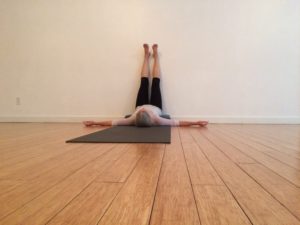
-
Lie on your back with your legs extended up the wall.
-
Option to prop underneath your lower back with a soft block or cushion
-
Hold 5 – 10 minutes (Longer is ok)*
*Gentle Inversion
-Reduces Stress on the body
-Calms the mind
-Restores heart and lungs
-Helps relieve water retention and swelling in the feet
-Stimulates legs, relieves lower back
-Brings bodily fluids, breath, and awareness to the abdominal region
-Reduces blood pressure
2) Child’s Pose
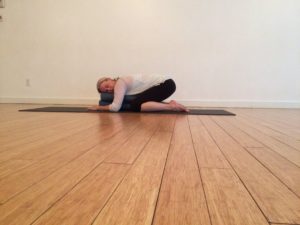
-Place your feet together at the back of your mat
-Take your knees wide, release your hips back towards your heels
-Place a bolster under the chest, and/or under the hips
-Hold 5-10 minutes (Change direction of the head half-way through)
*Supported Release*
*Calming, Detoxifying* – Closing in, bringing energy to the mid-line of the body
Bolster: Underneath torso, head can be turned to one side (adjust half way through)
Blanket: Rolled up underneath buttocks or ankles. Can also use second bolster to
support hips
Benefits:
–Opens the back body, especially the low back
-Gentle detoxifying squeeze to internal organs in abdomen
-Instinctively nurturing and safe
-Gives time and space for integration and balancing the left and right sides of your brain
and body
3) Classic Supported Fish
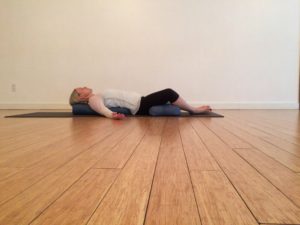
-Place your bolster or cushion lengthwise behind you and release down so that it supports your spine.
-Bring the souls of your feet together, let your knees drop out wide to opposite sides. Support under the knees or outer thighs with blocks, bolster, or strap
Strap: Around waist, over thighs, underneath ankles, buckle beside right hip with loose
end of strap pulling toward the body
Blocks: under thighs or knees
Bolster: under length of spine
*Hold for 5-15 minutes
*Legs can be straight or feet flat with bent knees instead
Benefits:
–Restores the natural curves of your spine
–Opens chest, shoulders, arms and throat
-Heart opening (Chakra, physical)
-Allows deep breathing by expanding the ribcage
-Stimulates organs through expansion (lungs and heart)
Integration poses: Slowly come out, lye on side, gently push up.
4) Wide Leg Forward Fold
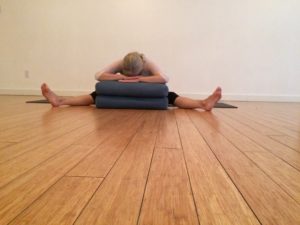
-Sit with your hips propped slightly forward (block or cushion beneath the pelvis)
-Take your feet wide apart, and begin to release forward
– Instead of going to the deepest flexibility, meet the body where it is at, allow
space to soften into
– Breath into back body
– Relax the Jaw, it is connected to the lower back
Bolster: Underneath forehead or centre of chest to support body weight
Blanket: Can be rolled up to tilt pelvis forward and sit on, or under knees
Blocks: Underneath knees to support a bend in knees
Benefits:
– Opens the back body
– Opens muscles and connective tissue in back of legs
– Opens up lower back and provides space around organs
– Releases neck vertebrae and can relieve tension headaches and insomnia
5) Supported Bridge Pose
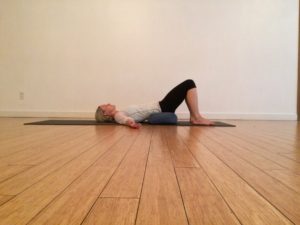
– Lie on your back with your knees bent and your feet hip distance apart.
– Keep your gaze to the ceiling so that your head and neck stay in line with your spine.
– Lift your hips and lower back up off the floor, and place a bolster or cushion at the top of your pelvis. Rest your hips on the bolster.
– Hold for 5 – 10 minutes, option to add hip opener (Eye of the Needle Pose)
Benefits:
– Releases the spine and the lower back
– Opens the Chest
– Stretches the Hip flexors and the front of the thighs
6) Eye of the Needle Pose
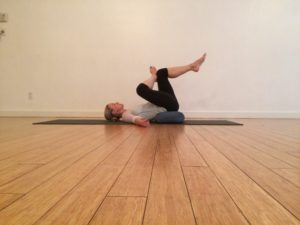
– Place your right foot on the top your left knee and allow your knee to release out to the side.
– Option to lift your left foot and draw your legs into your chest, with the bolster continuing to support your hips
– Hold 1-2 minutes each side
7) Supported Reclined Twist
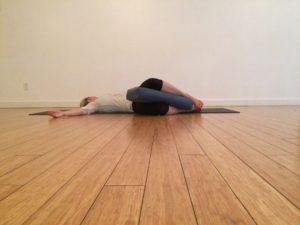
-Begin lying on your side, with your knees and hips stacked. You may have a bolster or cushion between the top and bottom leg. Reach your top arm up and open your chest to the ceiling, releasing your shoulder down to the floor.
– If the shoulder does not come all the way down to the floor, support with a blanket or cushion beneath the shoulder
– Use enough support to invite your body to release and open
– Exhale and release deeper into the twist
Bolster: Beside hip to support legs or underneath shoulder and arm
Blanket: Can use folded blanket as a support underneath shoulder
Benefits:
-Relieves stress in back muscles, sides of the body, chest and neck
-Enhances breathing
-Increases flexibility in the spine
-Improves digestion and tones internal organs
-Calms and rejuvenates the nervous system (Re-set, slows brain waves)
8) Savasana
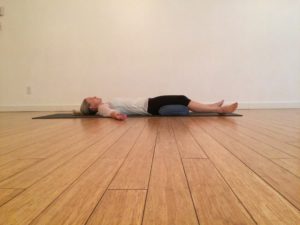
– We aren’t as tight or limited as we think. This practice of allowing reveals this.
– Give energy and trust to the natural intelligence of your body
– Enjoy the space and relaxed state you have created
Feel the Energy of your inner body. Let the mental noise start to slow down.
Connect to the life force underneath that animates your body, your breath. Explore
a deeper sense of awareness; underneath your thoughts and emotions.
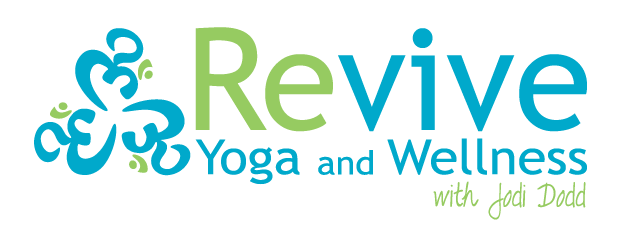
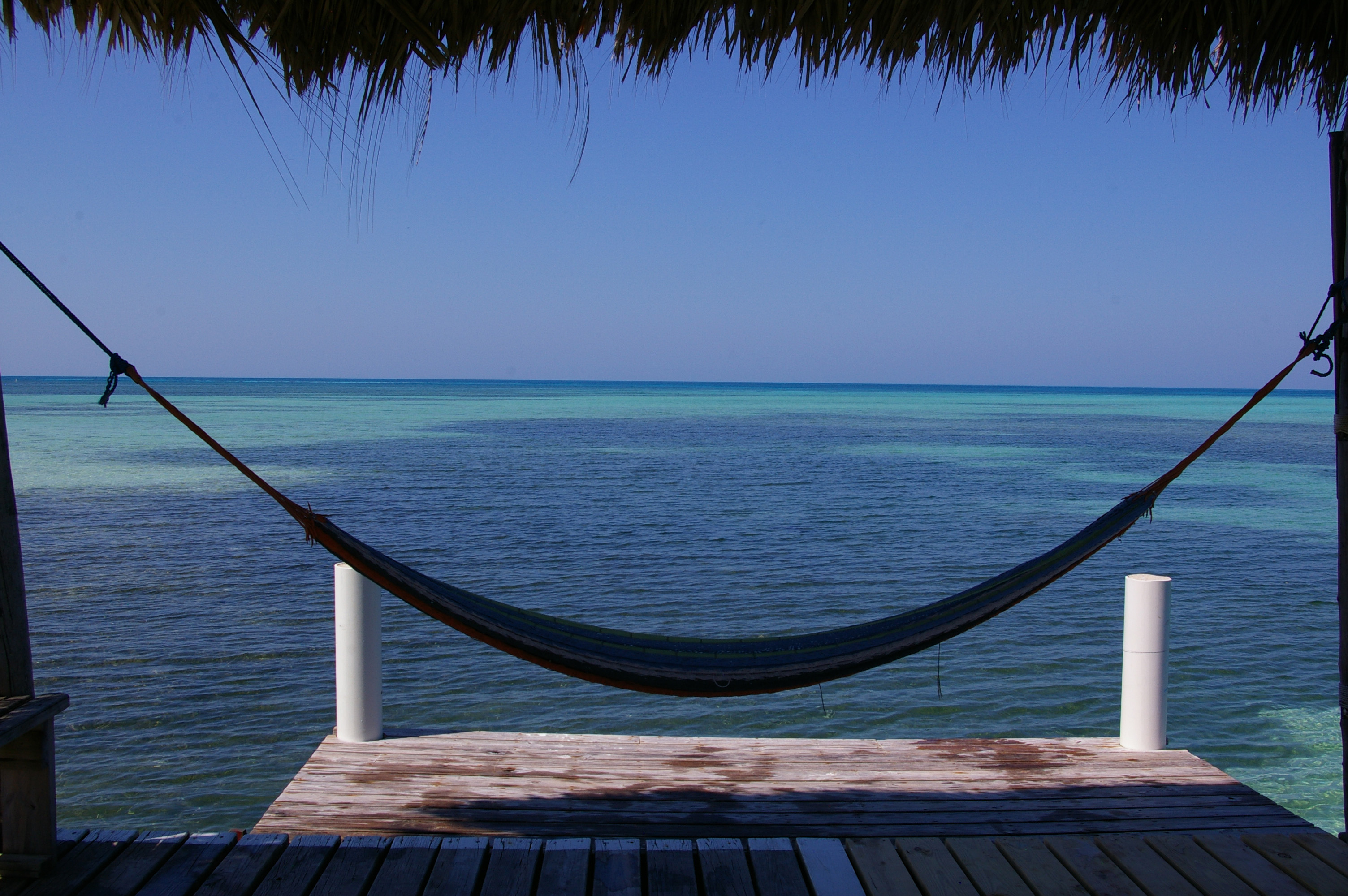
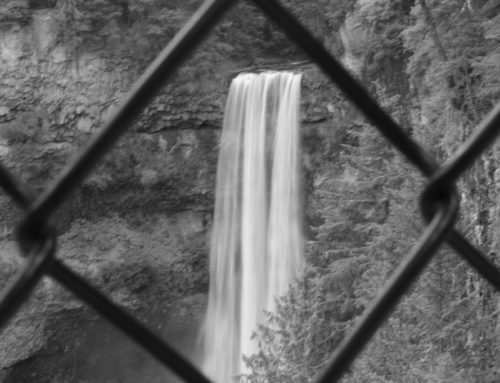
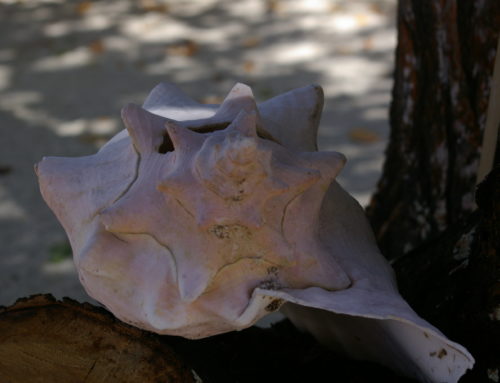

Leave A Comment